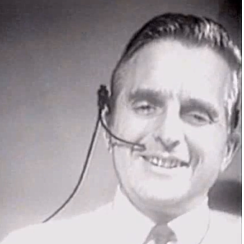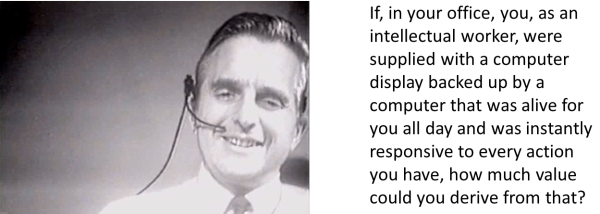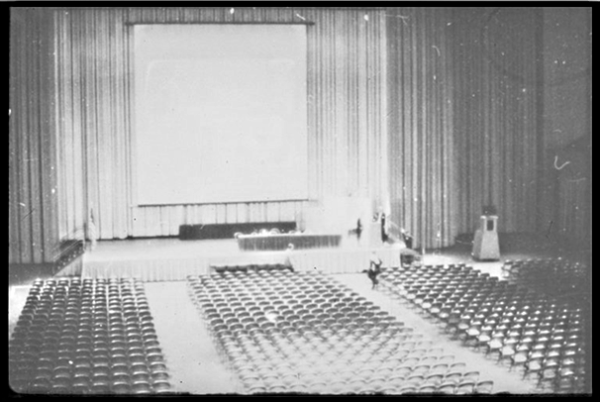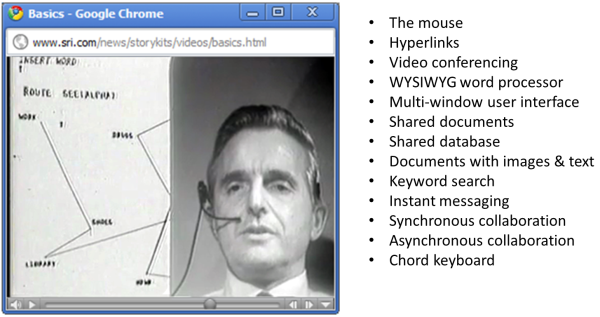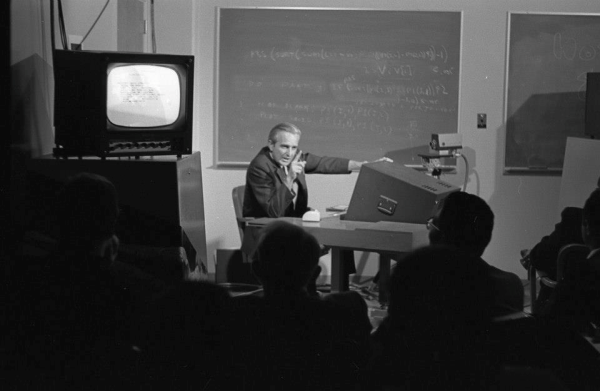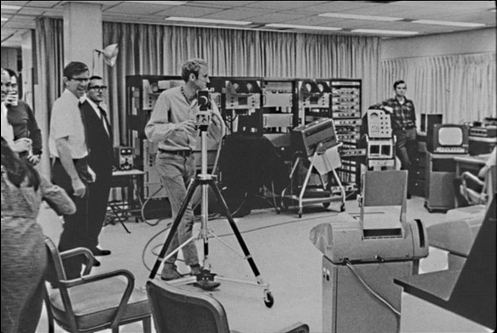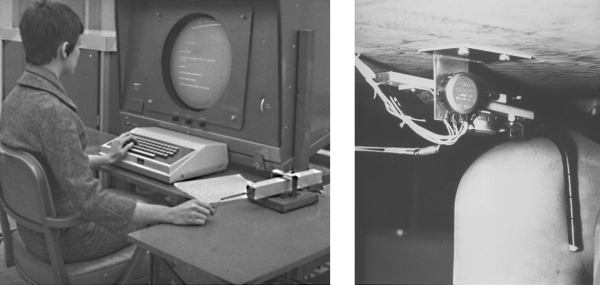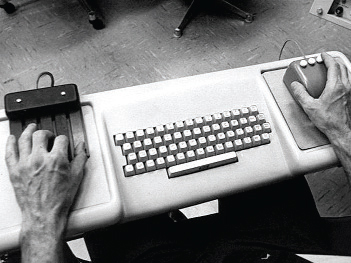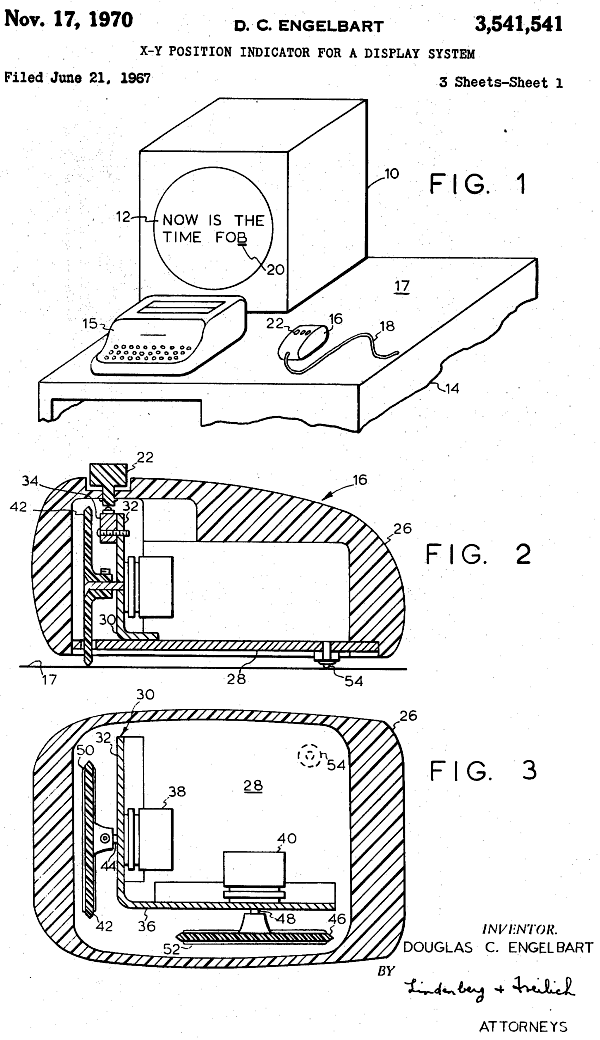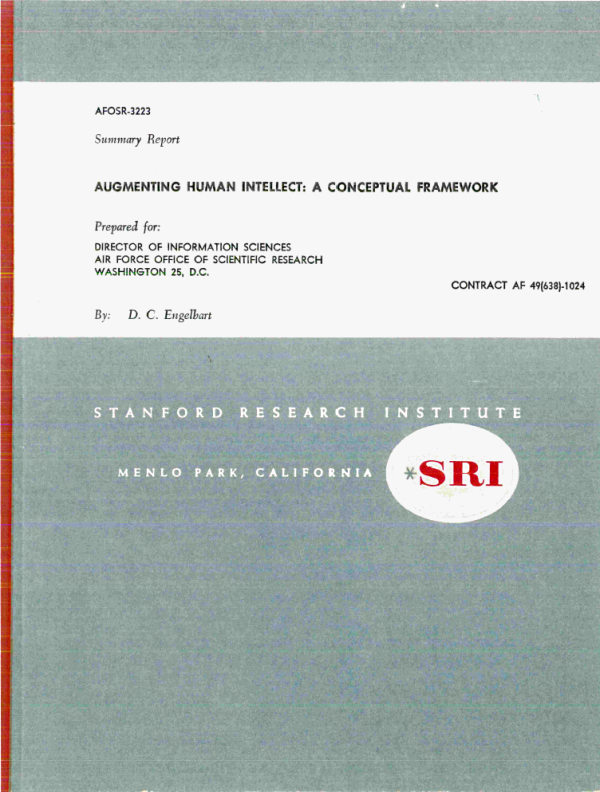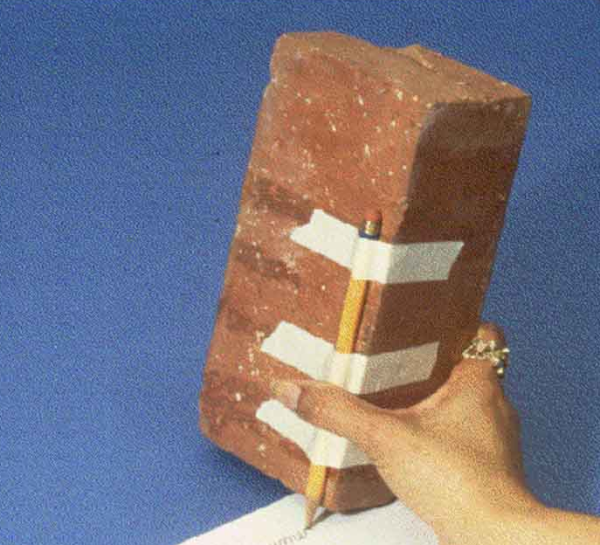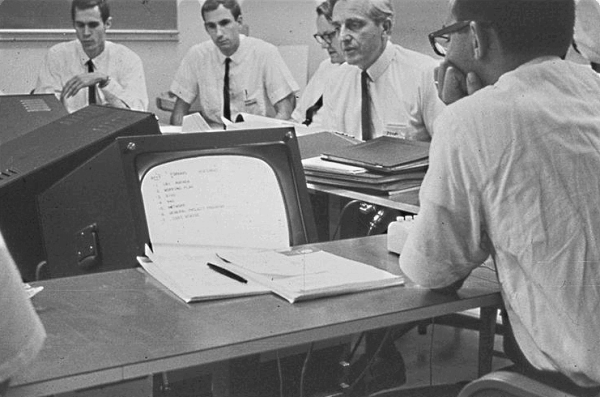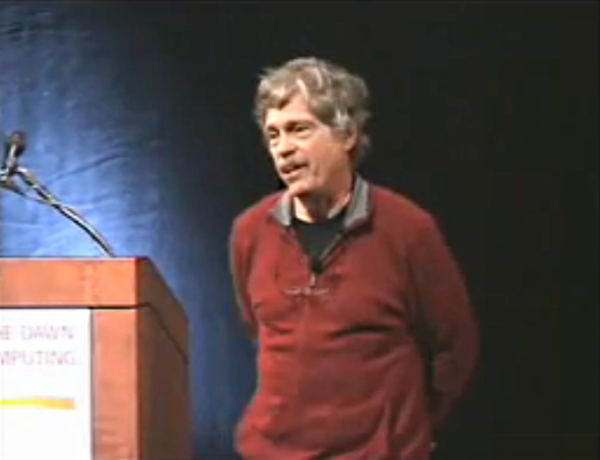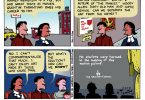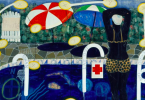aNewDomain.net — Doug Engelbart, a man who gave us many of the technological tools and concepts we take for granted, died recently. You can see my short tribute to Doug and links to several other tributes here.
For this post, I’ve pulled together a collection of photos illustrating Doug’s ideas. Included photos show the application of his ideas, devices he and his colleagues invented and The Demo — an extremely-influential unveiling of his work at a computer science conference in San Francisco in 1968.
Image credits below: The Doug Engelbart Institute, The Stanford Mouse Site, SRI 40th Anniversary Tribute to Doug Engelbart
Here we see Doug giving The Demo, in which he unveiled his revolutionary tools. Great research begins with great questions, and he began The Demo by asking the audience this question:
The conference program used this abstract to advertise The Demo.
This is the Brooks Hall auditorium, set up right before The Demo. An audience of 1,000 computer scientists and engineers gave Doug a standing ovation when he finished.
During The Demo, Doug showed prototypes of the very tools we take for granted today.
Here we see Doug rehearsing The Demo.
Behind the scenes at Doug’s lab. The applications Doug demonstrated were running on a time-shared computer in his lab at SRI, about 30 miles from Brooks Hall. A leased telephone line connected them for The Demo.
Bill English was the first employee in Doug’s lab. He was responsible for a large portion of the engineering and much of The Demo. He was co-author of the conference paper accompanying The Demo and lead author on the paper describing experiments to determine the speed and comfort of various pointing devices, including the mouse. He is shown here at an “ergonomic” workstation.
Doug’s applications required a display terminal with a device for positioning a “bug” on the screen. He and his colleagues experimented with several positioning devices, including the DEC Grafacon and knee-controlled device shown here. They gathered data on comfort, speed and accuracy and the mouse won out.
During The Demo, Doug used a chord keyset, keyboard and mouse. Keyboards and character sets were upper-case only in those days.
This illustration is from the mouse patent application.
The applications and devices Doug invented were tips of a conceptual iceberg. In this 1962 report, he laid out his framework for the augmentation of human intelligence.
To clarify the notion of using a machine like a computer to augment human intelligence, he demonstrated de-augmentation by writing with a pencil tied to a brick.
Doug also believed that people should and would make the effort to learn and use new devices if the payoffs were sufficient — he was not interested in having the computer mimic familiar tools. He made that point with this image.
Doug and his colleagues were able to invent many applications and devices in a very short time because they used their own tools as they worked. These tools made them more productive, and in turn improved their devices significantly. As the saying goes, “they ate their own dog food.”
Doug also created the first computer-enhanced room for synchronous collaboration during a meeting. He was interested in enhancing the productivity of groups of people, not just individuals. He spoke of “group IQ” and had a vision of solving very large and global problems by networking groups of people.
Alan Kaye put Doug’s work in context at a tribute commemorating the 40th anniversary of The Demo.
The images in this post are scattered around the Web, but the originals can be found at the following sites:
SRI 40th Anniversary Tribute to Doug Engelbart
If you have other images or recollections, please let us know by leaving a comment on this post.
Based in Los Angeles, Larry Press is a founding senior editor covering tech here at aNewDomain.net. He’s also a professor of information systems at California State University at Dominguez Hills. Check his Google+ profile — he’s at +Larry Press — or email him at Larry@aNewDomain.net.

